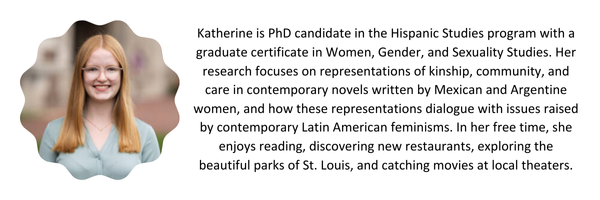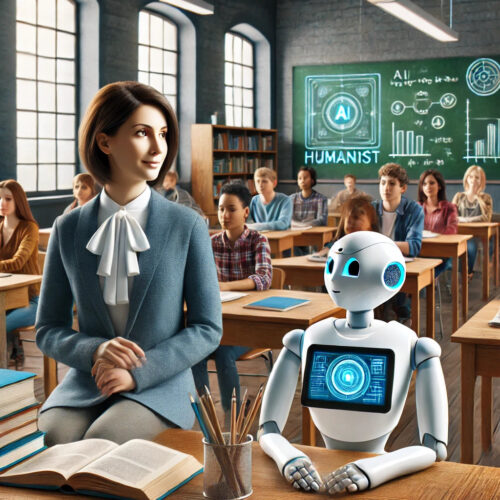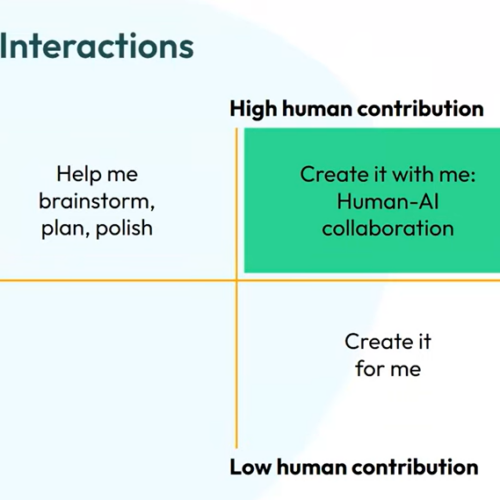Launching an AI Teaching Repository: Collaborative Approaches to Teaching in the Age of ChatGPT
Former CTL graduate fellow Katherine Tilghman reflects on the process of developing the new Generative AI Teaching Activities repository, and on strategies for collectively building resources to help instructors address AI in the classroom.
If you’re reading this, then you’ve surely heard it before: AI is changing the landscape of teaching and learning, and we need to adapt our classrooms to a new reality in which countless AI tools are at our students’ fingertips. But you may also be one of many educators asking themselves: how do I actually do that?
When I began a CTL graduate fellowship in the fall of 2023, ChatGPT had been out for less than a year, and the initial waves of panicked staffroom discussions and sudden syllabus overhauls were still rippling through higher ed. Instructors began to come to terms with the fact that, alarming as it may seem, our students are probably using generative artificial intelligence whether we like it or not. This poses practical challenges, especially in the classroom: how can we ensure students are learning the skills needed in our fields if AI offers low-effort shortcuts and passable results, all in a fraction of the time? How can we reimagine our classrooms for a world with AI when we’re only beginning to understand it ourselves? The answers are different in every university, department, and classroom, but ultimately, educators are facing these questions together—and there’s no reason to keep our answers to ourselves.
I saw this as an opportunity to launch a new CTL resource: an online repository where instructors could share classroom activities that teach students to use AI tools responsibly and critically. As a Spanish instructor, I knew databases of teaching activities already existed, like Indiana University’s TBLT Language Learning Task Bank. Creating a teaching activity repository for addressing AI would bring the CTL’s resources to the next level: beyond just inviting instructors to engage with AI in the classroom, we could begin sourcing concrete examples of how this can be done from instructors right here at WashU.
I began working with Jacqueline Garnett, another CTL fellow at the time, to develop this idea and bring it to our CTL mentors. In spring of 2024, Sally Wu (then our Assistant Director of Educational Technology) recommended we collaborate with the WashU Libraries Scholarly Communication and Digital Publishing Office (ScholPub), who could help us leverage existing institutional resources like the Open Scholarship platform. We began collaborating with a team of digital librarians and repository experts led by Emily Stenberg, and soon Eric Fournier (CTL Director of Educational Development) had joined the project as well. It was clear that the effects of AI on teaching were garnering interest across the university, and the creation of this repository brought together a truly interdisciplinary group of university staff, faculty, and graduate students, all of whom were committed to building a resource that would be useful to WashU’s teaching community.
In collaboration with ScholPub, we began designing the structure of the database and workshopping the upload form, aiming for a balance between ease of use for contributors, and detailed enough information to allow for eventual searching and filtering. By the end of the spring semester, the repository was ready for a soft launch, and is currently open for new uploads and contributions. Uploaders provide a title, some basics about their activity (like discipline, target course level, etc.), and a file containing information and/or resources that would be needed to replicate or adapt their activity. After a brief review by CTL staff for clarity and quality control, uploaded activities are made available in the repository, giving uploaders an Open Scholarship citation and a demonstrable example of their commitment to teaching and pedagogical adaptation. The impact and reach of Open Scholarship publications are considerable: as of October 2024, this publicly accessible repository already had over 200 downloads from users across the world.
During this first semester of the repository’s launch, our primary goal has been to generate faculty engagement and to keep growing this collaborative resource. In WashU’s 2024 Humanities in the AI Future conference, Jacqueline and I gave a demo of the repository for a Pedagogy Lightning Round that sparked lively discussion among committed pedagogues from WashU and across the country. More recently, I had the opportunity to give a presentation alongside Eric Fournier and Emily Stenberg at UMSL’s annual Focus on Teaching & Technology Conference, where we shared our process for creating the repository and collaborated with participants to discuss its applicability for other universities.
The usefulness of the repository, however, ultimately depends on us. As instructors, we have the power to create a collaborative culture pedagogical inspiration and resource sharing across disciplines. Have you addressed AI in the classroom? Do you have a short demonstration, activity, or assignment involving AI that you’ve used or plan to use? However simple or experimental your contribution may seem to you, other instructors will benefit from your experience as we all work through what generative AI means for our teaching. Few of us feel like experts yet, but the larger the repository grows, the more examples we’ll all have of how our peers are approaching this—and most importantly, the better prepared we’ll be to help our students learn in the age of ChatGPT.
We all know AI is shaking things up. Now it’s time for us to reimagine what that means for our teaching, and adapt our classrooms together.







